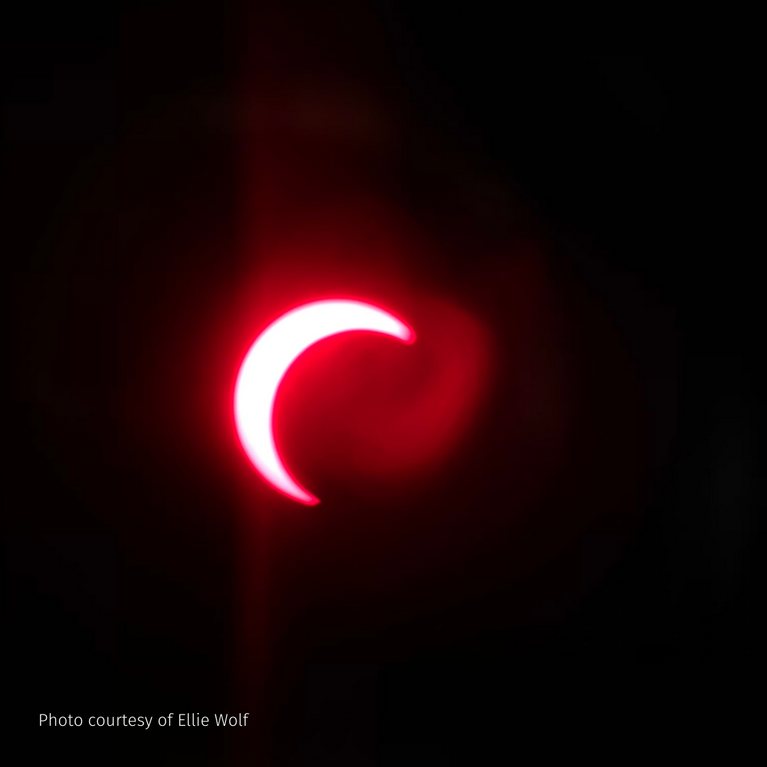Dark matter and Einstein rings solve ancient galaxy mystery
EARTH.COM - A team of researchers led by Hai-Bo Yu, a professor of physics and astronomy at the University of California, Riverside, has shed new light on the enigmatic nature of dark matter through the lens of an ancient galaxy. The study focuses on JWST-ER1g, a massive ancient galaxy discovered by the James Webb Space...
By Eric Ralls | Earth.com |
Dark matter might keep itself company, and that helps solve 2 cosmic puzzles
ASTRONOMY - Maybe dark matter talks to itself, according to a new proposal, and that might just explain two cosmological mysteries at once. Dark matter is the name astronomers give to the mysterious substance that makes up the bulk of all matter in the universe. Upwards of 80 percent of the mass of a galaxy...
By Paul Sutter | Astronomy |
UCR Distinguished Professor, Barry Barish, is awarded the 2023 National Medal of Science
THE HIGHLANDER NEWSPAPER - Professor Barish began his role at Riverside in 2018, after winning the 2017 Nobel Prize in Physics for his observations of gravitational waves which contributed to Einstein’s general theory of relativity. In an exclusive interview with the Highlander News, he states that the LIGO Lab’s research, which he received the Nobel...
By Alexandra Arcenas | The Highlander |
'Dark force' theory could solve 2 open cosmic mysteries
SPACE.COM - A new theory that suggests dark matter is made up of particles that strongly interact with each other via a so-called "dark force." If true, this may finally explain the extreme densities we see in dark matter haloes surrounding galaxies. The existence of particles called self-interacting dark matter (SIDM) acts as an alternative...
By Robert Lea | Space.com |
Webb telescope spots the most distant Milky Way-like galaxy yet
CNN - Astronomers have spied an intriguing phenomenon in the distant universe — a galaxy that closely resembles the Milky Way — and it’s challenging key theories on how galaxies evolve. The faraway system, called ceers-2112, was spotted by an international team using the James Webb Space Telescope. Like our home galaxy, the newly discovered...
By Ashley Strickland | CNN |
Webb discovery defies what we know about Milky Way-like galaxies
MASHABLE - Astronomers previously thought it took billions of years for galaxies to become stable enough to develop so-called "bars," ribbons of stars and gas that cut across the core of a galaxy. The Milky Way is an example of a barred spiral galaxy. But a new James Webb Space Telescope discovery means scientists might...
By Elisha Sauers | Mashable |
Electrons caught going around the bend
PHYSICS WORLD - Taking inspiration from the flow of air around aeroplane wings, researchers in the US have imaged photoexcited electrons flowing around sharp bends for the first time. Because such bends are often found in integrated optoelectronic circuits, observing the electrons’ “streamlines” could lead to improvements in circuit design. More than 80 years ago...
By Isabelle Dumé | Physics World |

CNAS Department of Physics & Astronomy Hosts Annular Eclipse Viewing Party
RIVERSIDE, CA - Hundreds of visitors flocked to UC Riverside last Saturday for an annular solar eclipse viewing party hosted by the College of Natural & Agricultural Sciences' (CNAS) Physics & Astronomy department. Unlike a total eclipse, an annular eclipse in one in which the moon does not cover the entire disc of the sun...
The 10 biggest (non-COVID!) science stories you might have missed in 2020
UC NEWS - 2020’s news cycle was dominated by COVID-19 stories, and for good reason: It’s been a year like no other. However, there were plenty of groundbreaking discoveries in 2020 that didn’t get the spotlight they deserved. These stories would have been big news in any other year, but were often overshadowed by the...
By Rana Freedman | University of California News |
How much Matter Is in the Universe? Scientists finally find the number
POPULAR MECHANICS - Scientists say they’ve calculated an answer to one of the thorniest questions in all of cosmology and physics: how much matter is in the universe? To find the best answer, the University of California, Riverside researchers combined robust mathematical models with existing knowledge of galaxy clusters, which helped them find the most...
By Caroline Delbert | Popular Mechanics |
Let us help you with your search